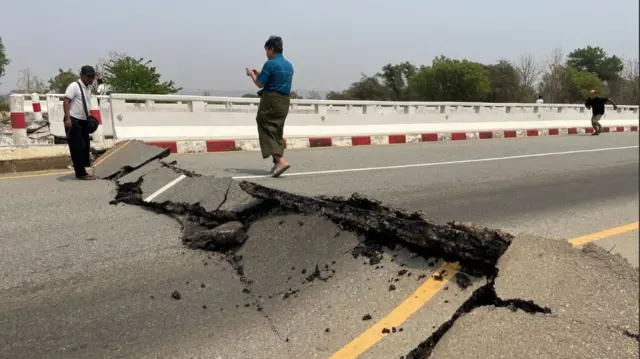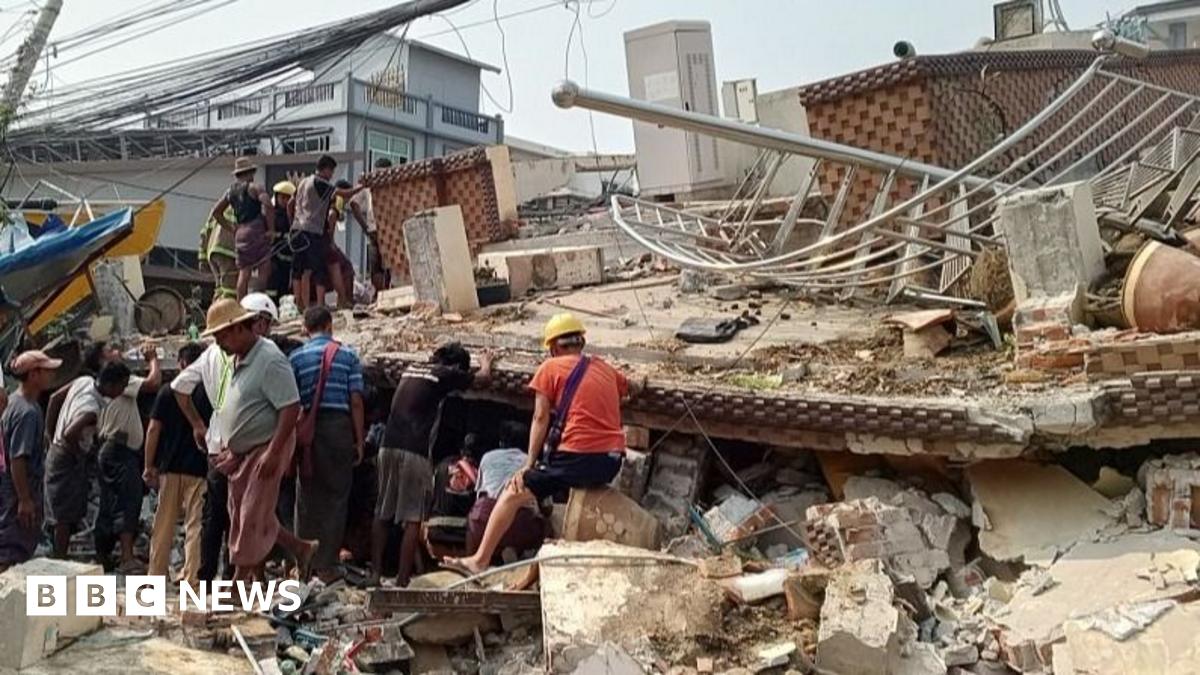Myanmar and Thailand earthquake live updates: Huge quake kills at least 144 in Myanmar, with many trapped as buildings collapse
Publicado por: @BBCWorld – Data: 2025-03-28 07:08:00
Could this earthquake have been predicted?published at 21:10 Greenwich Mean Time
 Esme Stallard
Esme Stallard
Climate and science reporter
 Image source, EPA
Image source, EPAThe top layer of the earth is split into different plates.
We have a good idea of where these boundaries are and also where there are
faults – cracks in the rock – created by the movement of these plates.
Geologists have built up this picture through studying
previous earthquakes and looking for clues in the rock. They understand that
friction gets built up between the plates as they move, and it can get released
as a surge of energy which is felt as an earthquake.
What they do not know is when that energy may get released.
This makes it very difficult for emergency planning.
For those countries that close to fault zones or the
boundaries of plates, buildings and infrastructure can be constructed to
withstand shaking of the ground. This is common on the western coast of the US
and in Japan.
However, when there are particularly big earthquakes the
impact can be felt much further away in countries that have not prepared for
earthquakes and would not generally consider themselves at risk. This is what
we have seen in Thailand and may explain why we have seen buildings collapse.
You may have heard of the use of early warning systems, but
these are only used for secondary effects like tsunamis or in the case of
earthquakes triggered by volcanic eruptions. In this case there are sometimes
warning signs that an eruption is imminent, for example the release of gases.
You can read more about predicting earthquakes, and why they are usually wrong.






